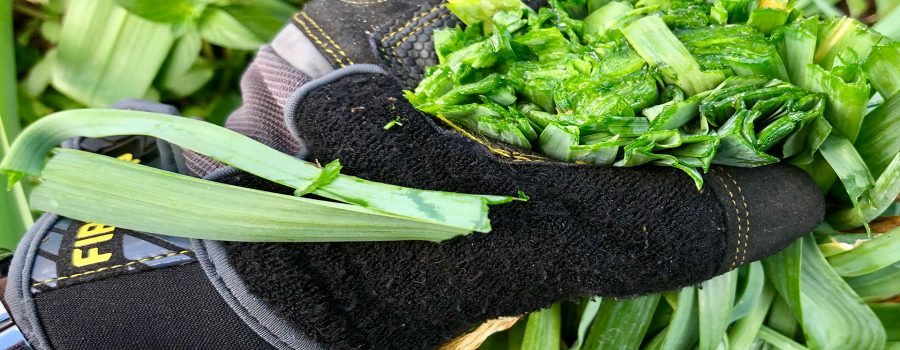How to Grow Leek Heirlooms in Raised Garden Bed Vegetables
If you want to grow leek heirlooms in your home garden, a 4-foot-long by 2-foot-tall raised garden bed is an ideal environment. Leek heirlooms are cool-weather crops with long, white stems and a flavor that’s sweeter and milder than onions. These raised garden bed vegetables are not only easy to grow but also offer rewarding harvests with minimal space.
Start by choosing a nutrient-rich, well-draining soil blend for your raised bed. Leeks love soil that is loose and fertile, so compost and organic matter are your friends here. Make sure your soil stays moist but never soggy. To grow leek heirlooms successfully, plant seeds about ¼ inch deep and space them roughly 4 to 6 inches apart in rows that are about 6 inches apart. Since leeks have a long growing season (up to 120 days), consistent watering and full sun exposure will help them thrive.
As your leek heirlooms grow, mound soil or mulch around the stalks to encourage the formation of long, white stems this is known as blanching. Because you’re growing these as raised garden bed vegetables, you have excellent control over soil conditions and drainage, making it easier to manage moisture and weed control throughout the season.
Tips to Grow Leek Heirlooms with High Success
One of the keys to raising productive, healthy leek heirlooms in a raised garden bed is avoiding overcrowding. Thinning the seedlings once they’re a few inches tall ensures each plant has enough space to develop. Raised beds are also great for crop rotation, which helps prevent pests and diseases year after year.
Don’t forget to fertilize occasionally with an organic fertilizer high in nitrogen leeks are heavy feeders and benefit from a nutrient boost mid-season. For best results, harvest your leeks when their stems are about 1 inch thick. If grown correctly, your compact raised garden bed can yield dozens of healthy and delicious leeks in one season.
Whether you’re planting from seed or starter plugs, the consistent depth and warmth of a raised bed makes it easier to grow leek heirlooms without the soil compaction problems often found in traditional gardens.
The Philosophy of Growing Cultivating Patience, Purpose, and Connection
To grow leek heirlooms is to embrace more than a gardening task it’s a philosophical act. Each seed planted is a lesson in patience and a reminder of our interconnectedness with the earth. In the ancient traditions of philosophy, tending to a garden was seen as an act of cultivating virtue. Marcus Aurelius wrote about the importance of aligning with nature and accepting the process of growth without force much like the slow, steady development of leeks, which require months of care before they’re ready to harvest.
When you nurture raised garden bed vegetables, you’re participating in an age-old dance between intention and surrender. You prepare the soil, monitor the weather, water consistently but in the end, you must trust the natural rhythm. The leek does not rush, and neither should the gardener. In this way, gardening becomes a form of mindfulness. You are present with each step, grounded in the reality of what you can control and what you must release.
The health benefits of leeks are not just physical; they offer an opportunity to nourish the soul. Choosing heirloom varieties connects us to ancestral wisdom generations of farmers who selected seeds not for mass production but for taste, resilience, and meaning. When we grow leek heirlooms, we preserve a lineage of intentional cultivation, a reminder that not all value lies in speed or yield, but in the quality of our care and the harmony we foster with the earth.
Philosophers from Aristotle to Thoreau have found truth in the garden. In your raised bed, you’re not just growing vegetables you’re growing clarity, reverence, and a deeper relationship with time itself.
The Historical Story Behind Leek Heirlooms
When you grow leek heirlooms, you’re participating in a tradition that dates back thousands of years. Leeks were cultivated by the ancient Egyptians and consumed heavily by Roman soldiers. In fact, Roman Emperor Nero was so fond of them that he believed they improved his voice and stamina.
Leeks became a symbol of Welsh heritage and are still celebrated on St. David’s Day. Their enduring popularity comes from their reliability in the garden and their flavor in the kitchen. Raised garden bed vegetables like leeks not only connect us to ancient traditions but also empower modern gardeners to continue preserving agricultural history.
The Health Benefits of Leeks Why You Should Grow Them
Beyond their culinary versatility, the health benefits of leeks are a major reason to grow leek heirlooms at home. They’re rich in prebiotic fiber, which supports a healthy gut microbiome. They also contain high levels of vitamin K, vitamin A, and manganese.
Another one of the major health benefits of leeks is their concentration of kaempferol, a powerful antioxidant known for its anti-inflammatory and cardiovascular benefits. These nutrients are often more concentrated in heirloom varieties, which haven’t been diluted through commercial hybridization.
By growing these raised garden bed vegetables, you’re choosing a plant that supports both your taste buds and your long-term health. The dense nutritional profile of heirloom leeks makes them a standout crop in any wellness-focused garden.
Why Raised Garden Bed Vegetables Like Leeks Are Worth It
Choosing to grow leek heirlooms in a raised garden bed offers control, efficiency, and abundance. These vegetables need little space, respond well to loose soil, and reward patience with robust flavor and strong health benefits. They’re part of a timeless legacy of sustainable gardening, healthy eating, and seasonal tradition.
Whether you’re a new gardener or a seasoned grower, these flavorful alliums are a simple and satisfying addition to any raised garden bed. With their ancient roots and modern health advantages, leek heirlooms make a meaningful contribution to any homegrown harvest.


